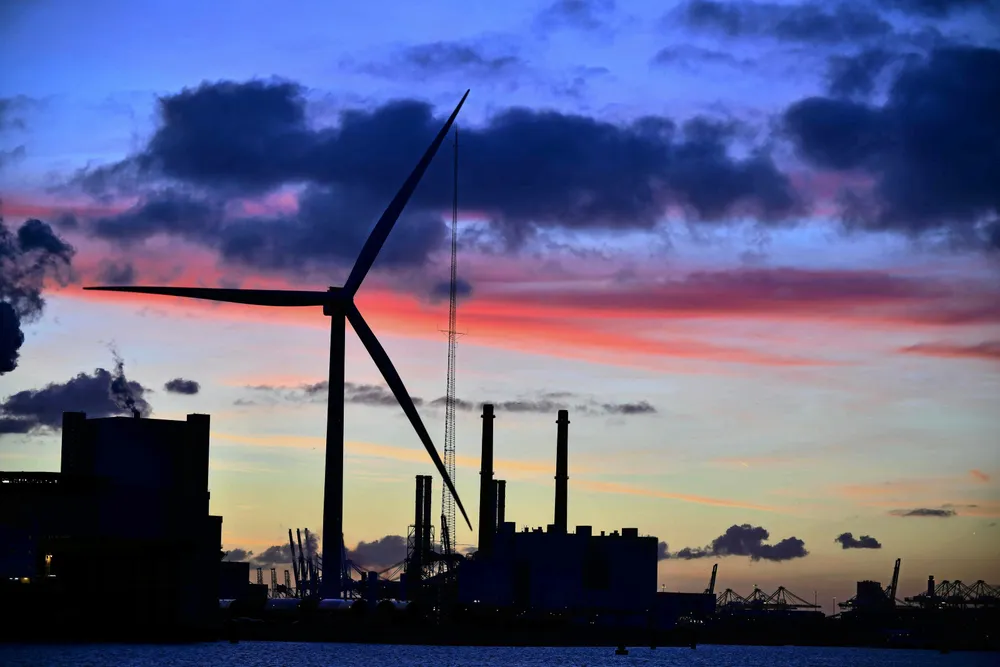GE's Haliade-X blade failures highlight new giant offshore wind turbine challenges: analysts
While the OEM continues its investigations, three mishaps this year underscore struggle to manufacture and install new supersize machines

US turbine OEM GE Vernova’s third blade mishap involving its 13MW Haliade-X model this year highlights challenges of manufacturing and installing latest generation supersize machines, according to market analysts.
On 22 August, GE Vernova reported that a 107-metre blade at the UK-based Dogger Bank wind farm had failed “during commissioning”.
It was the second mishap in weeks, following an incident at Vineyard Wind on 13 July in which a blade fractured and rained debris into the waters off Martha’s Vineyard in Massachusetts, causing temporary beach closures and sparking a firestorm of outrage in nearby communities.
It was also the second failure at Dogger Bank, which saw damage sustained to another Haliade-X blade in May, this one attributed to the installers.
The blades for Dogger Bank were manufactured at GE’s subsidiary LM Wind’s plant at Cherbourg, France.
“One failure at Dogger Bank due to an installation issue is unfortunate, another one at Vineyard Wind due to a manufacturing defect is a coincidence, especially since it is separate project sites and separate factories,” said Philip Totaro, CEO of renewable energy consultancy IntelStor.
“A third issue is a real problem and opens the door to China in Europe and solidifies Vestas and SGRE [Siemens Gamesa] as offshore vendors for the US.”
Siemens Gamesa has some 57% of the US offshore wind market, followed by Vestas at 32%, and GE at 11%, according to data from industry group American Clean Power Association.
Daunting dimensions
The Haliade-X are among the largest wind turbines ever installed, with a diameter of 220 metres and hub heights of 260 metres.
Siemens Gamesa and Vestas are rolling out even larger turbines of around 15MW with equally daunting dimensions.
“These blades are longer and heavier than blades that either the developers have seen, or the manufacturers have produced,” or that installers have handled, noted BloombergNEF wind power analyst Atin Jain.
Wind blades are comprised of advanced composite materials such as carbon fibre and epoxy resins, but their manufacture is surprisingly labour intensive, involving dozens of workers to produce a single unit.
“Blades are like largely handmade and ironing out all these faults and maintaining the same level of quality across different manufacturing facilities and even within the same manufacturing facility is an inherent challenge,” said Jain.
Totaro said that the industry is reluctant to automate the process of blade manufacturing that could potentially iron out irregularities.
BNEF's Jain noted that automated blade manufacturing is still experimental, though.
Andries Veldstra, senior underwriter for renewables insurer GCube Insurance, said that turbine OEMs will likely begin “re-examining their designs and manufacturing processes.”
GCube has criticised the ongoing turbine 'arms race' that has resulted in the latest generation supersize machines. Veldstra added: “Considerations around blade size, testing, manufacturing, and possibly a return to more manageable sizes could come into play.”
While blade manufacturing might still be largely labour intensive, GE has advanced computer assisted inspections of finished product.
On 22 May, it released a video touting its use of readily scalable technology “powered by AI and intelligent machines” to augment human inspection of blades before they are shipped.
“These capabilities will help to ensure that all blades that come out of the factory lines – no matter where they are in the world – have the same consistent quality,” the OEM said.
Market impacts
Market analysts are divided on long-term impacts of these blade failures to GE and the industry overall.
Referring to the still-unknown cause of the latest incident at Dogger Bank, Totaro asserted: “If this proves out to be a similar manufacturing issue as Gaspe, GE is done. Insurance will not underwrite. Developers will be reluctant to buy unless it's a huge price discount.”
BNEF’s Jain said: “Project developers around the world will be watching GE's response to these incidents very closely and a potential impact to GE's order book cannot be ruled out at this stage.”
“When you're short on cash or when you're financially strained, how do you prioritise fixing these quality issues?” said Jain. “That would be something that I would be keeping a close eye on,” he added.
In the US, the Vineyard incident also fuelled mounting opposition to offshore wind in general.
BNEF’s Jain downplays the long-term impacts, though, arguing, "We are just at the start of a very promising growth story” in US offshore wind.
BNEF forecasts 13.1GW of offshore wind by 2030, far short of the President Joe Biden’s target of 30GW but laying the foundation for some 40GW by 2040.
“We don't think these blade-related incidents would put a major dent on any of those installation targets,” Jain said.
(Copyright)